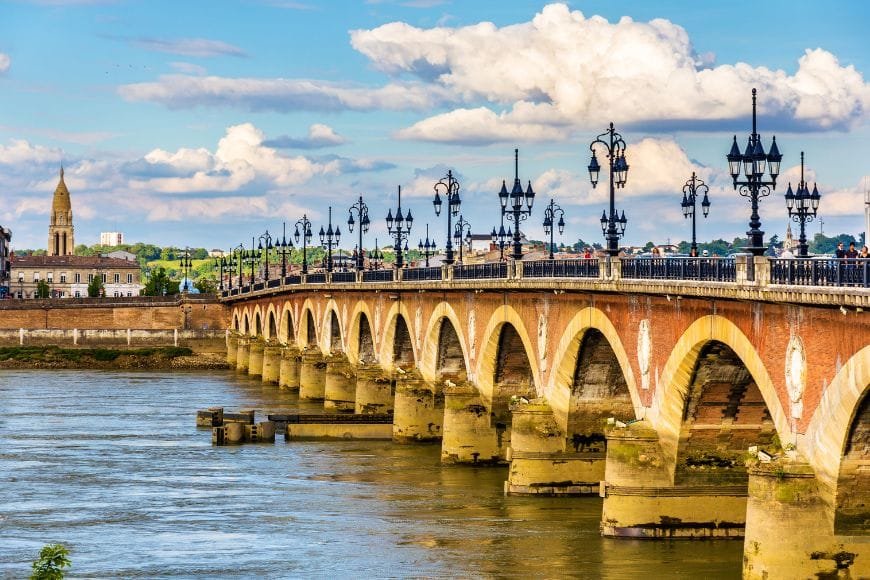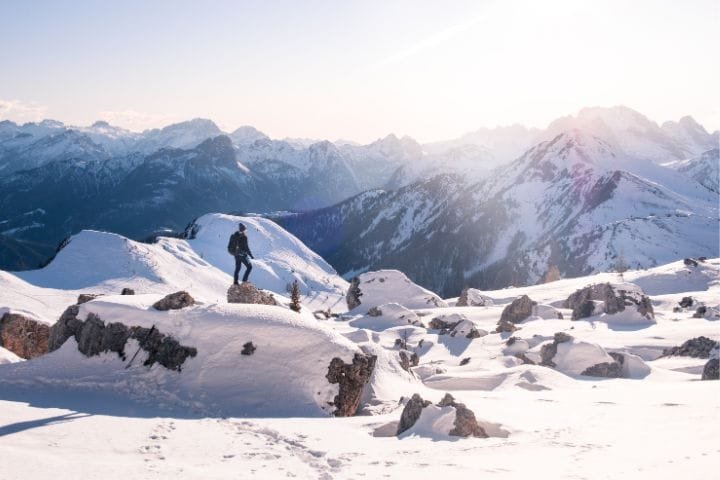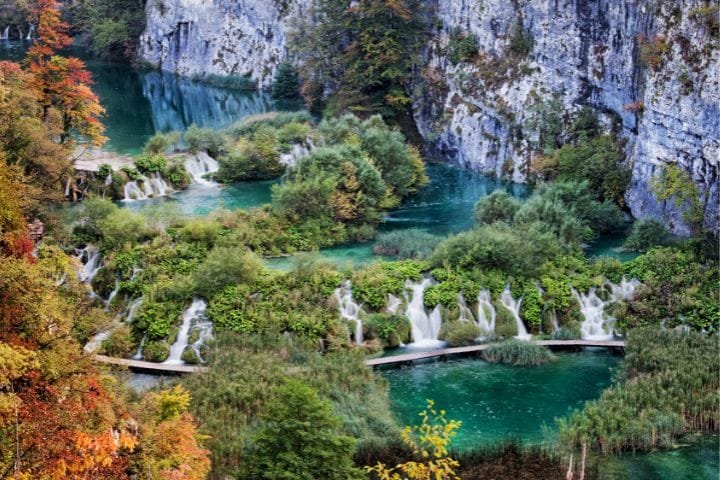Europe Road Trips (2025 Guide): Routes, Itineraries & Tips for Every Traveler

by Tim | Last Updated November 28, 2025

If there’s one thing I’ve learned after years of hitting the road, it’s this: European road trips are the best way to truly experience the continent. Every time I drive across Europe, it hits me how incredible it is to cross from one country to another and watch the landscapes, food, and culture change right in front of my eyes. No train or plane can match that feeling.
When I plan a Europe road trip itinerary, I always mix a bit of everything — mountain roads, coastal highways, small villages, and a big city or two. And honestly, this freedom is what makes Europe by car so special. You can start your morning in a medieval French town and end your day eating tapas in Spain or pasta in Italy. It’s one continent, but every turn feels like a new world.
My goal with this 2025 Europe road trips guide is to give you the kind of practical advice I wish I had on my first big drive. I’ll show you the best road trips in Europe, how to plan them, the routes I personally love, and the little tips that make the journey smoother — from choosing the right car and avoiding toll surprises to knowing when to visit and what to pack.
Whether you’re dreaming about a scenic road trip in Europe, a budget adventure across borders, or an iconic multi-country route, I’ve got you covered. This guide is your starting point — and trust me, once you hit the road, you’ll understand why driving through Europe is something every traveler should try at least once.
So grab the keys, my friend — the open road across Europe is calling.
🚙 Start Your Europe Road Trip Smart
Compare car rental prices across all major companies in one place:
👉 DiscoverCars – Best prices for Europe rentals
Planning Your Europe Road Trip
If you’re wondering how to plan a European road trip, don’t worry — I’ve been there too. Over the years, I’ve learned that planning a Europe road trip itinerary doesn’t have to be complicated. You just need a good starting point, a flexible mindset, and a sense of adventure. Here’s exactly how I plan my own Europe road trips, step by step.
Choose Your Travel Style First
Before anything else, decide the kind of adventure you want. Do you imagine yourself cruising along the coast, exploring medieval villages, or driving through mountains? Once I define the “theme” of my trip, everything becomes easier. It shapes the route, the pace, and even the car I rent — especially if I know I’ll be taking scenic road trip routes in Europe or tackling mountain passes.
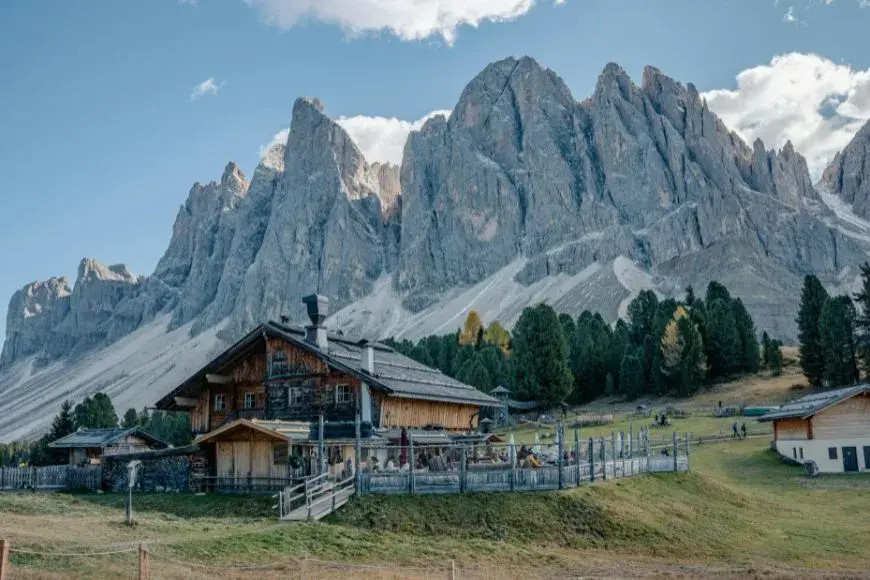
Pick Your Starting Point & Route
Your starting city sets the tone for the whole journey. I usually begin in major hubs like Paris, Milan, Munich, or Barcelona because car rentals are cheaper and highways are easy to access. Europe makes it incredibly simple to drive across borders, and that flexibility is one of my favorite things about traveling in Europe by car. You can plan multi-country Europe road trips without much hassle — and sometimes the best moments come from unplanned detours.
Decide How Many Days You Actually Have
Time is everything. Whether you’re planning a 7-day Europe road trip, a 2-week itinerary, or a 3-week European adventure, the number of days determines how far you can go. My personal rule? Always add one or two buffer days. Europe has a way of surprising you, and you’ll want time to enjoy unexpected stops without rushing.
Sort Out Licenses, Documents & Car Rental
Before hitting the road, make sure your driver’s license is valid for every country on your route. Sometimes you’ll need an IDP, depending on where you’re from. When renting a car, I always look for companies that allow cross-border driving in Europe and offer clear insurance options. A little extra coverage is worth it — trust me.
Know the Toll Systems & Fuel Rules
Each country has its own system: toll booths, electronic passes, or vignettes you stick on your windshield. France and Spain use toll gates, while countries like Switzerland and Austria require prepaid passes. Fuel prices also vary; for example, Spain and Slovenia are usually cheaper, while Italy and France are a bit higher. Knowing this helps me plan my refuel stops and road budget.
Use Good Navigation (and Keep a Backup!)
I always download offline maps before a big drive. Some parts of the Alps, Balkans, or rural Eastern Europe don’t have the best signal. Whether you’re exploring Europe self-drive routes or doing a big cross-continent adventure, good navigation is key. I also save my hotel coordinates, just in case I lose signal.
Recommended Car Rental for Europe Road Trips
I always use DiscoverCars for cross-country road trips in Europe — they have the best prices, full insurance options, and allow easy border crossings.👉 Check prices & availability on DiscoverCars
Best Road Trips in Europe by Region
One of the things I love most about Europe road trips is how quickly the landscapes, languages, and food change around you. You can start your morning on a calm French coastline and end your day in the mountains of Switzerland or the beaches of Spain. These are the best road trips in Europe, grouped by region so you can pick the style that fits your adventure.
Western Europe
Whenever I want culture, coastline, and great food all in one trip, Western Europe is my go-to. France, Spain, and Portugal have some truly iconic drives.
Top Drives I Always Recommend
France
- Paris → Normandy → Mont-Saint-Michel
- Bordeaux → Biarritz → San Sebastián (Atlantic beauty)
- Nice → Marseille → Montpellier
Spain & Portugal
- Madrid → Toledo → Seville
- Lisbon → Nazaré → Porto
- Barcelona → Costa Brava → Girona
These are perfect for your first Western Europe road trip — smooth roads, easy navigation, and great weather most of the year.
Southern Europe
Sunny beaches, dramatic coastlines, ancient ruins, and slow-travel villages… Southern Europe always hits differently. If you’re dreaming of an Italy road trip or a Mediterranean adventure, this region is for you.
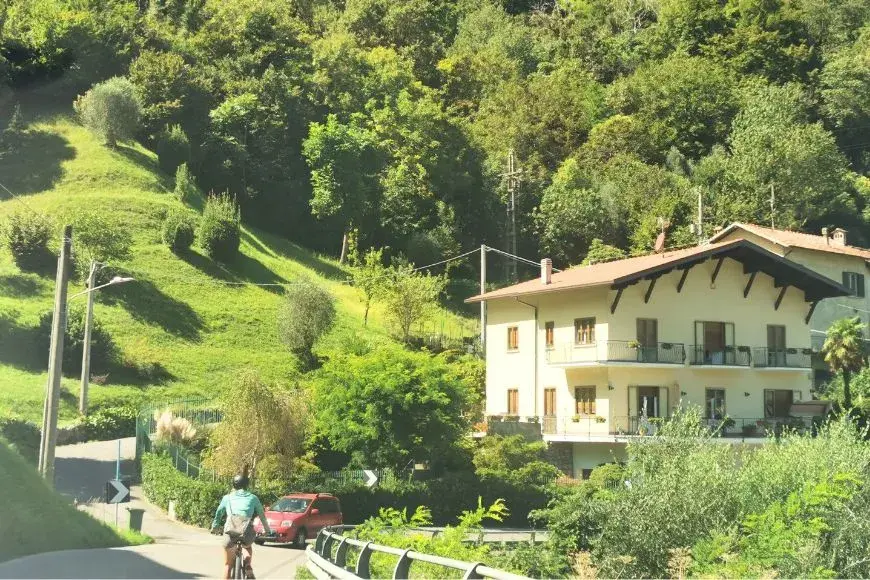
My Favorite Drives
Italy
- Rome → Florence → Venice
- Amalfi Coast Drive
- Milan → Lake Como → Dolomites
Greece
- Athens → Delphi → Meteora
- Athens → Peloponnese loop
Southern Europe is where I go when I want a mix of culture, sunshine, and food that makes every stop worth it.
Central Europe
Central Europe is full of fairy-tale towns, alpine lakes, and stunning drives. It’s relaxed, slow-paced, and always beautiful.
Routes I Personally Love
Germany
The Romantic Road
Munich → Salzburg
Switzerland & Austria
Zurich → Lucerne → Interlaken
Vienna → Hallstatt → Salzburg
If you’re into scenic Europe road trips, this region is unbeatable.
Eastern Europe & the Balkans
If you’re dreaming of a more rugged, authentic, and affordable adventure, nothing beats a Balkan road trip. This region mixes mountains, coastlines, and charming towns — all without the crowds.
Routes I Can’t Get Enough Of
Croatia
Dubrovnik → Split → Zadar
Albania
Tirana → Riviera → Saranda
Romania
Transfăgărășan Highway
Bosnia & Herzegovina
Sarajevo → Mostar
Each drive feels like discovering a secret — perfect for adventurous travelers who want Europe beyond the usual routes.
Northern Europe
Northern Europe is pure wilderness — dramatic cliffs, icy waterfalls, black-sand beaches, and open roads that feel endless.
My Go-To Routes
Scotland
North Coast 500
Iceland
Ring Road Route 1
Norway
Atlantic Ocean Road → Trollstigen
These journeys are ideal if you’re craving a bucket-list European road trip filled with nature and cinematic scenery.
Plan Your Trip with Our Favorite Booking Tools
Suggested Europe Road Trip Itineraries
Whenever I start planning a long drive, I always sketch out a few sample routes first. Over time, I’ve realized that having a clear Europe road trip itinerary (even a loose one) makes the whole experience smoother and so much more enjoyable. Here are the itineraries I personally recommend—whether you only have a week to spare or you’re ready for a full, unforgettable three-week adventure.
7-Day Europe Road Trip Itinerary (A Week of Pure Highlights)
This is my go-to itinerary for travelers who want a fast, exciting introduction to Europe. One week is short, but with smart planning, you can still enjoy a perfect mix of iconic cities, beautiful nature, and relaxing, slow moments.
Day 1–2: Paris → Burgundy Region
Start your adventure in Paris (easy pick-up, great connections). After a croissant and a quick stroll, head south to the Burgundy wine region. The drive is smooth, scenic, and full of small villages that look like movie sets. I always stop in Beaune for food and wine tastings.
Day 3–4: Burgundy → Geneva → Swiss Alps
From Burgundy, continue toward Geneva, then into the heart of the Swiss Alps. This part of the trip always feels magical—towering mountains, crystal-clear lakes, and wooden chalets. Staying in Interlaken or Grindelwald gives you great access to alpine viewpoints.
Day 5–7: Switzerland → Milan → Lake Como → Verona
From Switzerland, cross the border into Italy (super easy) and head straight to Milan for food and fashion. Then continue to Lake Como, one of the most peaceful stops in any European road trip. End in Verona, a charming city perfect for long evening walks and wine.
This itinerary gives you a taste of France, Switzerland, and Italy—all in seven days.
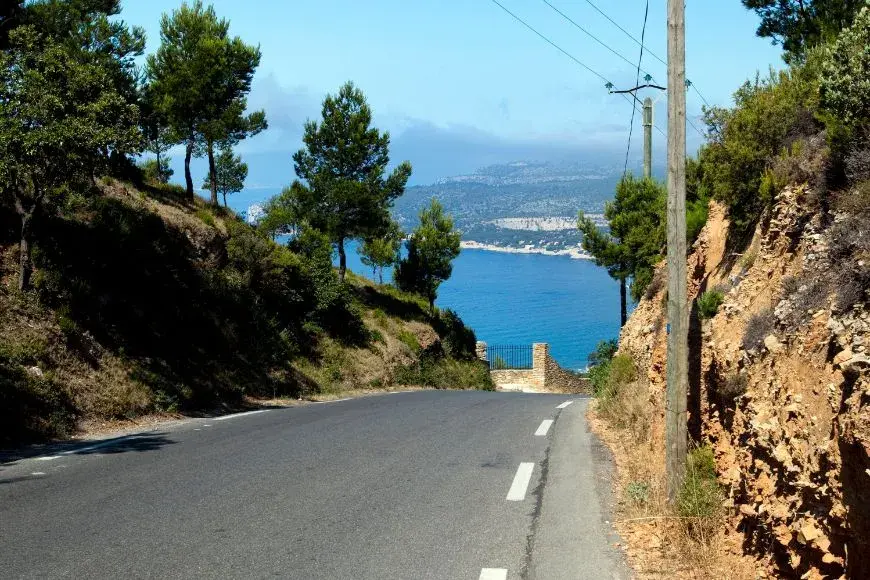
14-Day Europe Road Trip Itinerary (Western + Southern Europe Mix)
Two weeks is my favorite timeframe because you finally get space to breathe, explore, and enjoy the journey. This itinerary blends coastlines, wine regions, cities, and Mediterranean vibes.
Days 1–3: Paris → Normandy → Loire Valley
Start in Paris, then head west to the dramatic cliffs of Normandy. Mont-Saint-Michel is a must-stop. Afterwards, drive toward the Loire Valley, where castles and vineyards stretch for miles.
Days 4–6: Bordeaux → Basque Coast → San Sebastián → Bilbao
Continue your trip toward Bordeaux, then into the Atlantic Coast and Basque Country—one of the most underrated regions in Europe. San Sebastián is foodie heaven, and Bilbao mixes art, culture, and seaside air.
Days 7–10: Barcelona → Valencia → Alicante
Cross into Spain and follow the coastline south. Barcelona’s architecture and energy make it one of my favorite road trip stops. Valencia is perfect for paella lovers, and Alicante is all about beaches and sunsets.
Days 11–14: Florence → Tuscany → Rome
Head east into Italy, and suddenly the food, culture, and landscapes change completely. Spend a night in Florence, explore the Tuscan countryside (Chianti, Siena, Pienza…), and end the trip in Rome—where every street feels like a museum.
This two-week plan blends Western Europe charm with classic Southern Europe road trip energy.
21-Day Europe Road Trip Itinerary (The Grand Multi-Country Adventure)
This is the big one—the road trip of a lifetime. If you’ve got three full weeks, this itinerary takes you across the continent from west to east and into the heart of the Balkans. It’s perfect if you want the ultimate Europe by car experience.
Week 1: France → Switzerland → Austria
- Paris → Dijon (wine + medieval streets)
- Dijon → Geneva → Interlaken (alpine lakes + fresh air)
- Interlaken → Lucerne (mountains + lake towns)
- Lucerne → Innsbruck → Salzburg (Austrian mountain scenery + Mozart vibes)
This week is full of iconic postcard views and some of the most beautiful roads on the continent.
Week 2: Italy → Slovenia → Croatia
- Venice (gondolas + canals)
- Dolomites (jaw-dropping mountain roads)
- Lake Bled → Ljubljana (Slovenia’s prettiest region)
- Zadar → Split → Dubrovnik (the legendary Croatian coast)
Every day feels like a new world—European diversity at its finest.
Week 3: Montenegro → Albania → Greece
This is where your adventure shifts into a full Balkan road trip.
- Kotor → Lovćen National Park (mountains + sea in one view)
- Podgorica → Albanian Riviera (turquoise waters from Durrës to Saranda)
- Himarë → Gjirokastër (stone towns + Ottoman history)
- End the journey in Greece: Meteora or Thessaloniki
The final stretch feels raw, authentic, warm, and incredibly rewarding.
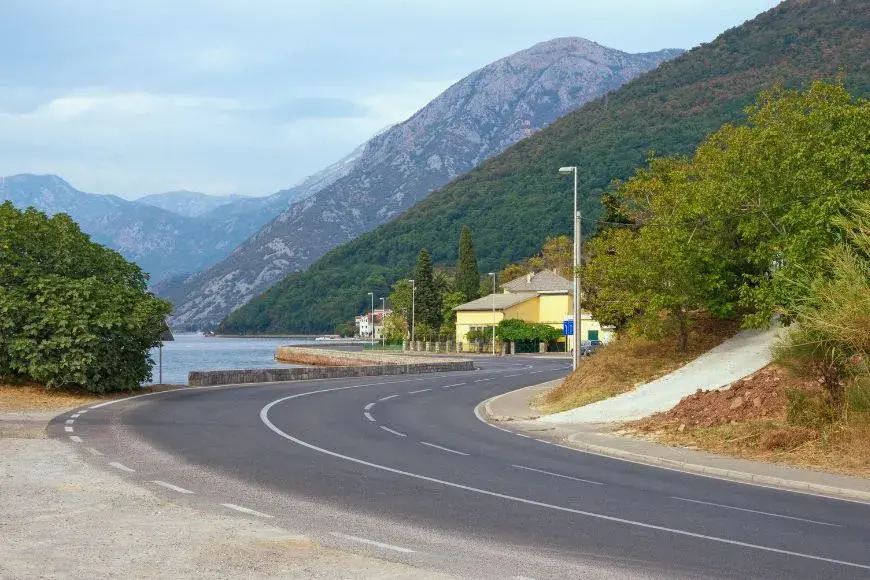
Accommodation & Food on the Road
One of my favorite things about Europe road trips is the mix of places you get to stay in — one night you’re waking up in a small village surrounded by vineyards, and the next you’re checking into a boutique hotel overlooking the sea. Over time, I’ve figured out a few tricks for finding great accommodation and delicious food along the way.
Choosing the Right Places to Stay
When I’m planning a long drive, I like to mix different types of accommodations. In big cities, I usually book a hotel with private parking (trust me, it saves you a lot of stress). But once I’m out on the open road, I prefer smaller guesthouses, agriturismos, or Airbnb-style apartments.
Here’s my personal rule:
Cities = hotels with parking.
Countryside = guesthouses, farm stays, and local B&Bs.
This gives you comfort when you need it and a more authentic experience when you’re exploring rural areas. Plus, farm stays in Italy and Portugal often include homemade breakfasts that are worth the entire stop.
My Tips for Booking Places on a Europe Road Trip
- Book city hotels in advance, especially in summer. Parking fills up fast.
- Stay flexible in rural areas — I often book these one or two days in advance.
- Look for places near the road, not in the middle of busy historic centers.
- Check reviews for parking safety, especially in Southern Europe.
- Choose accommodations with good access to the highway or main route so you’re not wasting time navigating tight streets.
One of my golden rules: always choose a place with breakfast included if you’re crossing borders or heading into the mountains. It saves time and money.
Choosing the Right Places to Stay
Food is where Europe truly shines. Every country has its own specialties, and I always plan at least one “food stop” each day.
Some of my favorite road trip food moments:
- Fresh croissants in a tiny French bakery
- Pintxos in San Sebastián
- A plate of pasta in an Italian trattoria after a long drive
- Grilled fish along the Croatian coast
- Greek pies in a mountain village on the way to Meteora
I always say: eat what the region is famous for, and you’ll never go wrong.
My Go-To Eating Strategy
Here’s what I do to keep things simple, fun, and delicious:
- Avoid tourist restaurants close to main squares — go two streets behind.
- Use Google Maps reviews to filter by “local favorite.”
- Try at least one regional dish in every country (it becomes a fun challenge).
- Pack snacks for long stretches, especially if you’re driving in the Alps or the Balkans.
- Drink coffee in local cafés, not gas stations — it’s cheaper and 10× better.
And one more thing: don’t be afraid to take “food detours.” Some of my best road trip memories come from following a sign that said “homemade cheese,” “local wine,” or “fresh seafood today.”

Budget & Travel Costs
Let’s talk money — because every great European road trip needs a realistic budget. I’ve done Europe drives on both a tight budget and a more comfortable one, and trust me, you can make it work either way. The key is understanding where your money goes: fuel, tolls, food, accommodation, and a few unexpected surprises along the way.
Here’s how I usually break it down and what you should expect.
Fuel Costs: What I Actually Pay on the Road
Fuel is usually your biggest road trip expense after accommodation. Prices change a lot from country to country, so here’s my simple rule:
Cheapest fuel in Europe: Spain, Slovenia, Andorra, Croatia
Most expensive fuel: Italy, France, Switzerland
When planning a route, I always mark the cheaper fuel stops on the map — it’s an easy way to save €20–40 per tank on long drives.
Average fuel prices I’ve seen:
- €1.55–1.75 per liter in most of Western Europe
- €1.35–1.50 per liter in Spain and Slovenia
- €1.90–2.20 per liter in Switzerland (ouch)
If you’re doing a multi-country trip, set aside around €40–80 per day for fuel, depending on how much you drive.
Tolls & Vignettes (This Is Where Many Travelers Get Surprised)
Europe has different toll systems, and this can really impact your budget. France, Spain, Portugal, Croatia = toll booths.
Austria, Switzerland, and Slovenia = vignettes (mandatory windshield stickers).
My advice? Always check the toll system before entering a new country. I’ve accidentally taken the “toll highway” too many times — and it adds up quickly.
Average toll costs per country:
- France: €30–70 per long route
- Italy: €20–50 depending on distance
- Spain: Some free motorways, some paid (~€10–30)
- Switzerland: One-year vignette (€40)
- Austria: 10-day vignette (~€10)
- Slovenia: Weekly vignette (~€15)
If you want to plan like a pro, always check toll routes before you go — it saves a lot of surprises.
Accommodation Costs: My Realistic Breakdown
Accommodation can be as cheap or as fancy as you want. Personally, I mix it up: budget hotels, cute guesthouses, farm stays, and one or two special boutique hotels along the way.
Average prices per night:
- Budget guesthouses / hostels: €40–70
- Mid-range hotels: €80–120
- Boutique hotels (Italy, France, Austria): €140–260
If your trip includes Switzerland, Norway, or Iceland, add +20–30% to everything.
The Balkans? Subtract 20–40%. It’s wonderfully affordable.
My advice:
Book major cities in advance, but stay flexible in countryside areas — you’ll often find better deals at the last minute.
Food Costs: What I Usually Spend Daily
Food is where Europe shines, and you don’t need a big budget to eat well. Local bakeries, small taverns, and family-owned restaurants always deliver quality without breaking the bank.
Typical daily budget:
- €20–30 if you eat simple local meals
- €30–50 for a mix of cafés + restaurants
- €70+ if you dine in nicer places or try wine tastings
One thing I’ve learned: never skip the local dishes. They’re always the best value.
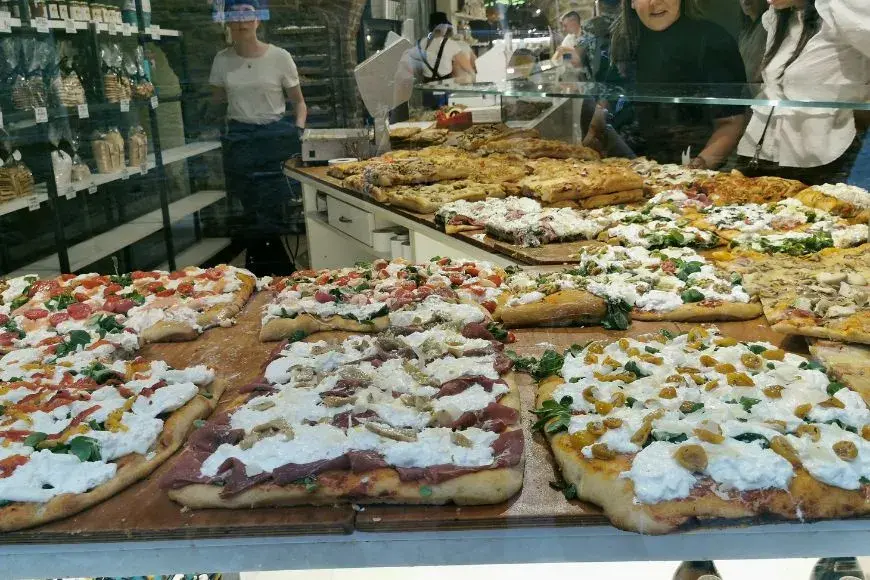
Total Daily Budget Estimate for a Europe Road Trip
Here’s what I personally budget depending on the style of travel:
💸 Budget Traveler: €70–120/day
(fuel, tolls, simple meals, basic hotels)
✨ Mid-Range Traveler: €130–220/day
(comfort hotels, restaurants, some activities)
🌟 Comfortable Traveler: €220–350/day
(boutique hotels, nicer meals, multiple attractions)
If you’re doing expensive countries (Switzerland, Norway, Iceland) or lots of toll roads, increase by 20–30%.
Essential Tips for Driving in Europe
Over the years, I’ve learned that road trips in Europe get a lot easier once you understand a few essential driving rules. Roads change fast from one country to another, so I always remind myself of these tips before every big drive. Here’s my personal list — based on real mistakes, real wins, and a lot of kilometers.
Know the Toll Systems & Vignettes Before You Enter a Country
Europe has three types of road systems:
- Toll booths (France, Spain, Portugal, Italy, Croatia)
- Vignettes (Austria, Switzerland, Slovenia)
- Mostly free motorways (Germany, Belgium, Netherlands)
My advice? Always check the system before crossing the border. I once crossed into Slovenia without a vignette, and trust me, the fines are not fun.
If you want a full breakdown of how tolls work, link to your existing guide here later.
Plan Your Trip with Our Favorite Booking Tools
Watch Out for ZTL Zones
If you’re going into Italy, remember this:
Italy ZTL zones are no joke.
These are restricted driving zones in historic city centers. Cameras snap your license plate, and fines arrive weeks later. I’ve been caught once in Florence and once in Pisa — lesson learned the hard way.
Whenever I’m driving in Italy, I always park outside the center and walk in.
(It’s prettier anyway.)
Parking Can Be Tricky — Plan Ahead
Europe has beautiful cities… and tight parking. Here’s what works for me:
- Book hotels with private parking in major cities.
- Use paid parking garages for safety.
- Avoid street parking in historic centers (especially in Italy, Spain, and France).
- In small towns, parking is usually free and easy — a nice break from city chaos.
If you’re doing a Balkan road trip, parking becomes easier and cheaper the further south you go.
Carry All Your Documents
Every country requires slightly different documents, but this is my standard list:
- Driver’s license
- International Driving Permit (if needed)
- Passport
- Car rental contract
- Insurance documents
- Green Card (proof of insurance for cross-border travel)
Keep them all in one folder — border police sometimes ask for all of them at once.
Speed Limits Change Quickly
Europe doesn’t really “look” different from country to country, but the rules do. Here’s a quick reminder:
France: 130 km/h motorways
Spain: 120 km/h
Italy: 130 km/h
Germany: Autobahn (variable, sometimes unlimited)
Austria/Switzerland: 120 km/h and strict cameras
Balkans: 80–120 km/h, depending on the country
My tip: set your navigation to display speed limits — it’s saved me from a lot of camera flashes.
Fuel Prices Vary by Country (A Lot)
When I know I’m entering Spain, Slovenia, or Andorra, I always refuel there — it’s noticeably cheaper.
In Switzerland, France, and Italy… prepare your wallet.
Navigation: Download Offline Maps
I don’t care how good your internet plan is — some parts of Europe have zero signal. Especially in mountain regions, rural France, the Dolomites, and the Balkans.
Before any big route, I always download:
- Google Maps offline
- A backup map on Maps.me
- Hotel addresses saved as screenshots
This one habit has saved so many of my trips.
Don’t Rush — Europe Rewards Slow Travel
My favorite drives always happened on the days I wasn’t rushing. Europe is full of small towns and hidden gems that you’ll never find in a guidebook. Stop when something looks interesting. Eat when you see a crowd of locals. Take a detour if the view looks good.
That’s the whole point of a Europe road trip — freedom.
Best Time for a Europe Road Trip
One of the things I love most about Europe road trips is that every season has its own personality. I’ve driven across Europe in spring sunshine, summer heatwaves, autumn colors, and even winter snow—and honestly, each one offers something special. Here’s my personal breakdown to help you choose the perfect time.
🌸 Spring (March–May): My Personal Favorite
If I had to pick one season for a long Europe road trip, it would be spring. The weather is mild, flowers are blooming everywhere, and tourist crowds are still low. You feel the continent “wake up,” and it’s perfect for long scenic drives.
Why I love spring:
- Perfect temperatures for both coastlines and mountains
- Cheaper hotels and quieter cities
- The landscapes look fresh and green
Spring is especially beautiful for Italy road trips, France’s countryside, and the Austrian Alps.
☀️ Summer (June–August): The Classic Road Trip Season
Summer is the most popular time to drive across Europe—and it shows. Long days, clear skies, and warm nights make it a dream for coastal drives. But it’s also the busiest (and most expensive) season.
What to expect:
- Amazing weather in the Mediterranean
- Busy beaches and crowded city centers
- Higher prices for hotels and rentals
My advice? Start your driving days early. It helps you avoid traffic and gives you more time to stop at beaches, viewpoints, and cafés along the way.

🍂 Autumn (September–November): Perfect For Slow Travel
Autumn is the “sweet spot” for a lot of travelers, and I totally get why. The temperatures drop, crowds thin out, and the fall colors are incredible.
Why autumn works so well:
- Warm days, cool nights
- Wine harvest season in France, Italy, and Slovenia
- Everything is cheaper compared to summer
If you’re planning a Balkan road trip, autumn is ideal—the weather is still warm, the sea is swimmable, and the roads are quiet.
❄️ Winter (December–February): Beautiful, But Requires Prep
Winter isn’t for everyone, but some of my most memorable drives happened during this season—especially in Switzerland, Austria, and the Dolomites. You just need to be prepared.
Winter pros:
- Cheaper prices
- Christmas markets (magical!)
- Great for skiing road trips
Winter cons:
- Snow and ice in mountain regions
- Shorter days
- Some roads and passes may be closed
If you’re driving in winter, check road closures daily and always have the right tires or chains—especially in the Alps or Eastern Europe.
So, When’s the Best Time Overall?
For me, the ideal times for a Europe road trip are:
Late April → early June
September → mid-October
Great weather, fewer crowds, better prices, and the flexibility to drive almost anywhere without stress.
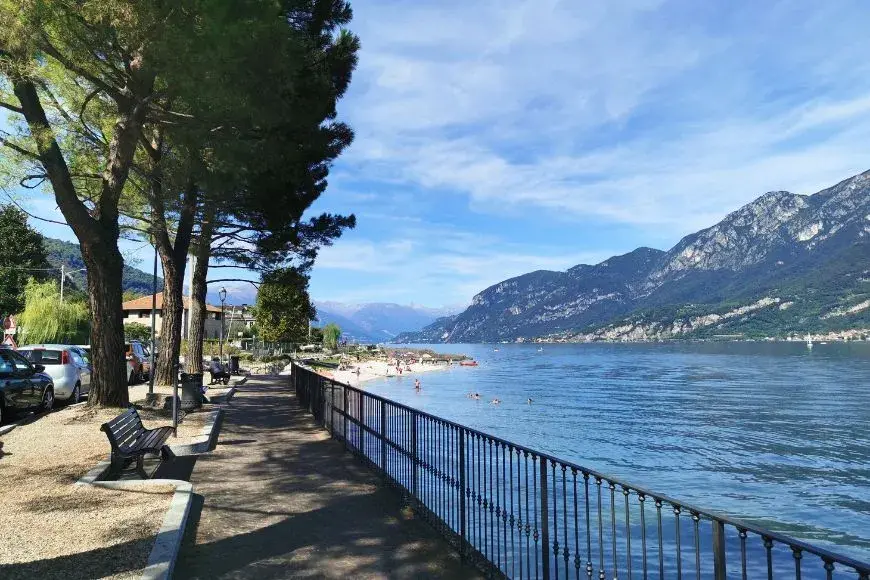
What to Pack for a Europe Road Trip
Packing for a Europe road trip is all about balance. You want to be ready for different countries, weather changes, toll systems, and long driving days — without overloading your suitcase. After years of driving across Europe, I’ve figured out the items I always bring with me, no matter the season or route.
Here’s my personal packing list (and trust me, it’s been perfected through trial and error).
Documents You Should Never Forget
I keep these all together in one small pouch so I can grab them fast at borders or rental counters:
- Passport
- Driver’s license + International Driving Permit (if required)
- Car rental contract
- Insurance papers + Green Card
- Credit card for toll booths and deposits
- Printed hotel reservations (some rural areas have a bad signal)
This is the “no excuses” list — if I forget anything else, I can still survive.
Car Essentials I Always Carry
Whether I’m doing a short weekend trip or a long multi-country route, these items save me every time:
- Phone mount (for easy navigation)
- USB chargers + power bank
- Dashboard anti-slip mat
- Sunglasses (Europe has serious glare!)
- Reusable water bottle
- Snacks for long stretches (nuts, fruit, chocolate — the essentials)
- Small trash bag (trust me, your future self will thank you)
And depending on the season:
- Snow chains for winter in the Alps
- High-visibility vest & warning triangle (mandatory in many countries)
Clothing for a Comfortable Road Trip
You don’t need a huge wardrobe — you need comfortable, versatile pieces. My packing rule is simple:
1 outfit for driving days, 2 outfit for cities, 1 for nature. Then rotate.
I usually bring:
- Comfortable pants / shorts for long drives
- A couple of breathable T-shirts
- A light jacket or hoodie
- One “nicer” outfit for dinners or big cities
- Comfortable walking shoes
- Swimsuit (for beaches, lakes, or hotels with pools)
If your European road trip itinerary includes Switzerland, Austria, or the Balkans, expect the weather to change suddenly. Layers help a lot.
Tech & Navigation Tools
Technology makes road trips a lot smoother, so here are the tools I rely on:
- Google Maps + offline maps downloaded
- Maps.me (backup navigation)
- Spotify playlists/podcasts
- Portable WiFi or local SIM card
- Camera for scenic spots
- Extra SD card or cloud backup
If you’re doing a long Italy road trip or exploring the Balkans, offline maps are a lifesaver — many rural areas have zero signal.
Health & Comfort Items
A few small things can make a big difference on the road:
- Painkillers (for long drive headaches)
- Motion sickness tablets (for winding mountain roads)
- Wet wipes
- Small first-aid kit
- Travel pillow
- Sunscreen
- Hand sanitizer
- Mini toolkit
Honestly, these are the things I end up using the most.
Food & Drink for Long Drives
I always pack a few basics so I’m not stopping every hour:
- Water
- Light snacks
- Gum or mints
- Instant coffee sachets (hotel coffee can be tragic)
And if you’re heading into the Balkans or through the Alps, keep some snacks in the car — sometimes towns are far apart.
My Golden Packing Rule
Pack light, stay flexible, and be prepared for anything.
A great Europe road trip doesn’t need 10 bags — just smart packing and the right essentials.
Europe Road Trip Resources
Whenever I plan a big Europe road trip, I use a few key tools and guides to make everything smoother — from choosing the best car to understanding toll systems and avoiding unnecessary fees. These resources will help you build the perfect itinerary and travel across Europe with confidence.
🚗 Car Rental & Driving Essentials
These are the guides I personally rely on before every major trip:
👉 Find the best car rental deals in Europe with DiscoverCars
👉 Best Rental Cars for Road Trips in Europe
👉 One-Way Car Rental in Europe (No Fee Guide)
👉 European Toll Roads Guide for Travelers
👉 How to Plan a European Road Trip Itinerary This Year
These resources cover everything from saving money on car rentals to navigating tolls and avoiding ZTL fines — the “boring” parts that actually make a huge difference on the road.
🛡️ Travel Insurance & Safety
A good road trip is fun. A safe one is smarter.
👉 Best Travel Insurance for Europe Road Trippers
This guide helps you choose the right coverage for car rentals, medical emergencies, lost luggage, and trip delays — things you hope never happen, but it’s better to be prepared.
FAQs About Europe Road Trips
How long does a Europe road trip take?
It honestly depends on how many countries you want to cover. I’ve done 7-day Europe road trips that felt complete, and I’ve done 3-week adventures that still left me wanting more. My advice? Start with a realistic route and don’t try to “do everything.” Europe rewards slow travel — trust me on this.
Do I need an International Driving Permit (IDP) to drive in Europe?
If you’re from the EU, you’re good. If you’re from outside the EU (like the US, UK, UAE, etc.), many countries accept your regular license, but some — especially Italy, Austria, and some Balkan countries — may require an IDP. I always carry one anyway. It costs very little and avoids problems at borders or with car rental companies.
Are tolls expensive when driving through Europe?
Some countries, yes — especially France, Italy, Portugal, and Croatia. Others use cheap vignettes (Austria, Switzerland, Slovenia). And some countries, like Germany, Belgium, and parts of Spain, have mostly free highways. I always check the toll system before crossing a border. It saves money and avoids surprise payments.
Is parking difficult in European cities?
In big cities like Rome, Paris, Barcelona, and Munich — yes. That’s why I always book a hotel with private parking or use secure parking garages outside the center. But in small towns and rural areas, parking is usually easy and free. If you’re doing a long Italy road trip or exploring the Balkans, parking gets easier the further south you go.
What’s the best time of year for a Europe road trip?
My favorite months are late April to early June and September to mid-October. The weather is perfect, roads are quieter, and hotel prices are more reasonable. Summer is great too — just expect crowds and higher costs. Winter can be beautiful, but only if you’re prepared for snow and shorter days.
Final Words
Your Europe Road Trip Adventure Starts Now
If there’s one thing I’ve learned after years of exploring the continent, it’s that Europe road trips are the most rewarding way to travel. No other style of travel gives you this much freedom — the freedom to stop whenever a village looks charming, to follow a mountain road just because it feels right, or to cross into a new country simply because it’s only an hour away.
What I love most about driving across Europe is how every route tells a different story. The Alps, the Mediterranean, the Balkans, the wine regions, the coastal roads… each one feels like a new chapter, and every mile brings something unexpected. And the best part? You get to create your own itinerary. No fixed schedules, no rushing for trains, no strict tours — just you, the open road, and endless possibilities.
Whether you choose a short 7-day Europe road trip, a two-week adventure through Western and Southern Europe, or a full three-week journey that takes you into the heart of the Balkans, I hope this guide gives you the confidence and inspiration to start planning your own route. Pack smart, stay flexible, and don’t be afraid to take detours — that’s where the best memories happen.
💬 We’d love to hear from you!
Have questions, tips, or personal travel stories to share? Drop them in the comments below — your insights help fellow travelers plan their adventures too.


